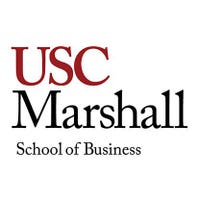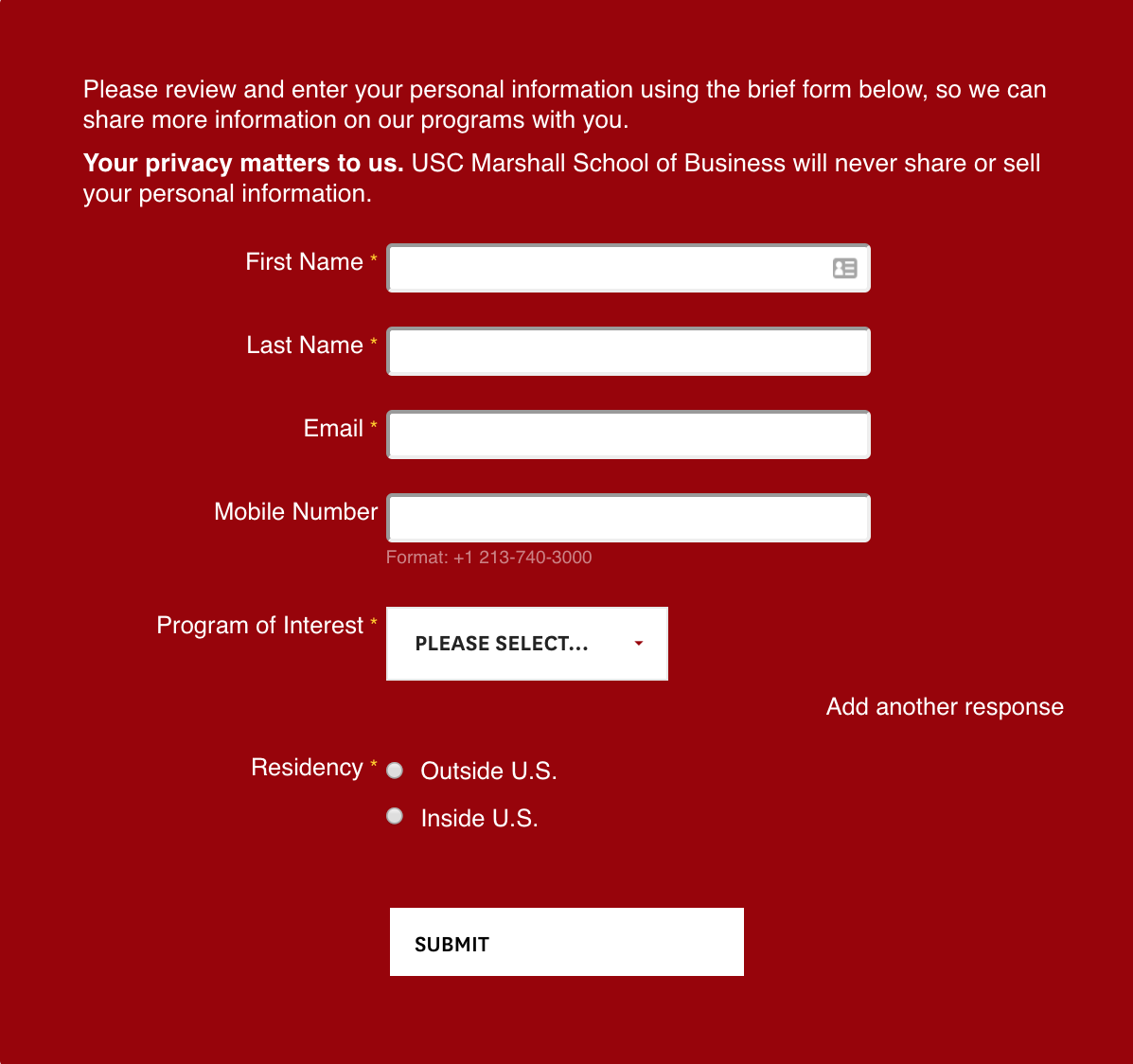

The numbers
15
graduate programs
40+
active forms
10,000+
applicants yearly
Use Cases
Student Inquiry Forms
Problems Solved with the switch to FormAssembly
By creating forms that allow prospective students to easily specify what information they’re inquiring about, USC Marshall is now able to automate responses. The automation of responses alleviates staff from the burden of answering an abundance of emails & alike questions, and from sharing the information manually. This process has been critical in saving staff time of up to two hours per form. It has also been a huge help to clean up their webpages. The web forms help keep their website organized, while matching their overall aesthetic.
Matt shared that one of the greatest benefits is the reliability that FormAssembly has provided, giving staff a sense of relief when it comes to gathering sensitive information. The reliability of FormAssembly’s automated connectors helps eliminate human error and provides protection.
With FERPA, GDPR, and GLBA compliance, FormAssemby’s secure data collection platform helps keep student, staff, and alumni data safe. The web form platform also provides TLS 1.2 encryption in transit and at rest, respondent authentication (SSO), administrative controls, and advanced security and privacy controls.

Don’t just collect data
— leverage it.
